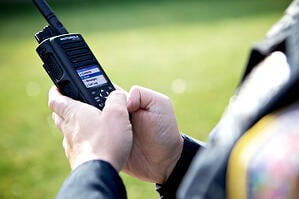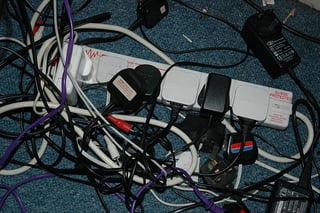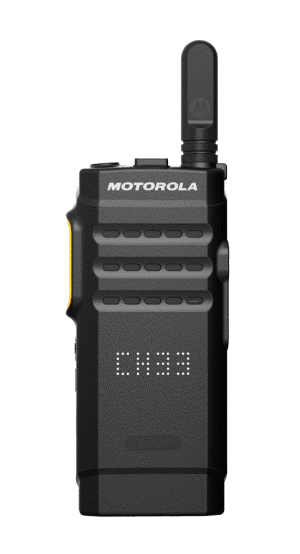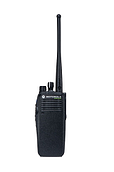For years you've been seeing two-way radios everywhere you've gone. The usher in the movie theater was using them, the engineer at the hotel you stayed at, the security guard in the casino, the front desk supervisor at the office building, even the football coach in the game you were just watching, now it's your turn at your job. Your organization has decided to make the jump from cellular to two-way radios and it's your responsibility to set up the communications but you don't have the slightest idea as to what would be best.
This is Part 1 of our beginner's guide to navigating the world of two-way radio communications. In it we will address how to choose the right two-way for you and your organization. Part 2 will cover the actual usage and operation of a two-way radio
When deciding on the appropriate two-way radio there are some questions you need to ask.
- Mobile vs. Portable - How are you planning on using the radios? Mobile radios are units that are installed in a vehicle like what a bus driver would use. Portable radios are your "typical walkie-talkie" - units that can be carried around.
- UHF vs. VHF - UHF ("Ultra High Frequency") 403-512 MHz is used primarily for indoor applications where there may be some obstacles. VHF ("Very High Frequency") 136-174 MHz is better suited for outdoor applications without much interference.
- Number of Users/Number of Channels - The number of people using your radios system should be considered when thinking about how many channels you would need. Also consider if you need private channels for management, security, emergency etc.
- Number of Locations - How many locations will be using the radio system? Multiple locations can be linked allowing you to communicate from one location to another or you can have radios for a particular building only.
- Features - In an utopian world, what features would you like on your two-way radio? Do you need a "man down" alert? Would you like to be able to text message? Do you need a display that will show names? Depending on the unit chosen, those features are a few of the options available.
- Ruggedness - Do you require intrinsically safe units? Are your radios going to primarily be used by executives or do you need a more rugged unit for the maintenance workers?
- Budget - The pricing of two-way radios range depending on the units and features. It's a good idea to have a budget in mind when you start talking to a sales rep about your wish list. Put together a list of what is an absolute must and also what you would like if possible.
Don't be overwhelmed with the options available. Start by asking yourself the questions above. Below is a link to a radio selection guide that should also help you see what options are out there. Call your local radio dealer and they will help guide you through the process. Once you have your radios up and working you'll wonder why you waited so long to switch.






 Motorola Solutions, Inc. has recently announced an addition to their ever growing
Motorola Solutions, Inc. has recently announced an addition to their ever growing 


 ddition to the MotoTRBO family, the XPR6100. This is an entry level MotoTRBO digital radio with crystal clear audio, digital performance and efficiency and a great price. It is voice centric and backwards compatibile with your traditional analog radios. This 32 channel portable radio is available in UHF anf VHF frequency bands and comes standard with an IMPRES Li-Ion 1500 mAh battery.
ddition to the MotoTRBO family, the XPR6100. This is an entry level MotoTRBO digital radio with crystal clear audio, digital performance and efficiency and a great price. It is voice centric and backwards compatibile with your traditional analog radios. This 32 channel portable radio is available in UHF anf VHF frequency bands and comes standard with an IMPRES Li-Ion 1500 mAh battery. 


